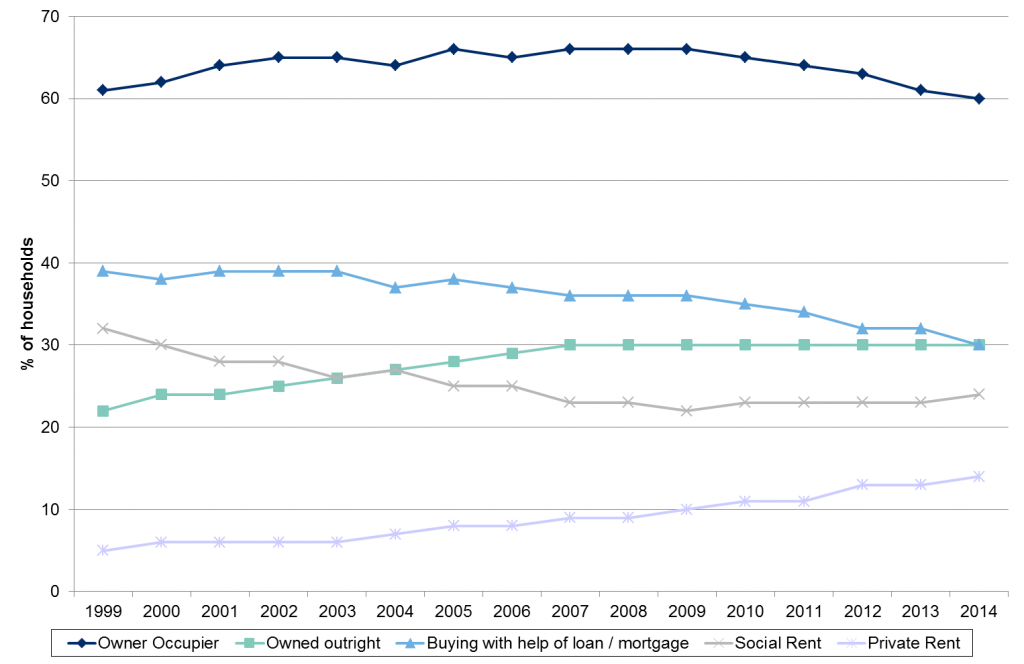Today, 1st September, Nicola Sturgeon announced the new programme for the Scottish Government, which includes a new bill to improve the private rented sector (PRS) that will be published this autumn. This announcement is particularly welcome following the results of the 2014 Scottish Household Survey that were released in the form of Scotland’s People Annual Report last Wednesday, 26th August.
The annually published Survey figures show that 14% of all Scottish households now live in the PRS, a total of 330,000 households. This is up from 5% in 1999 and 13% for the last two years. The growth in this sector, and changing nature of households within it, as the Survey details, pinpoints the PRS as a key area where reform is needed to meet the needs of all households now living there.
Alongside sections on economic activity, health and finance, the Scottish Household Survey asks several questions on housing, which can be used to explore the relationships between living circumstances and the characteristics, attitudes and behaviours of Scottish households.
One of these areas is on the proportional split of the population into different tenures, and trends over time. In contrast to the growth of the private rented sector, the social rented sector accounts for 24% of all households (slightly up in the last few years but following a long term decline), and 60% of households are in the owner occupied sector.
Tenure of household by year, copied from SHS, figure 3.1: 1999-2014 data, Households (minimum base: 10,630)
The private rented sector
Traditionally housing students (a fifth of adults in the PRS are in further or higher education), or young professionals whilst they save a deposit, the sector is structured for high mobility: almost half (44%) of households having been at their current address for less than a year. Evidence also shows that the coined term ‘Generation Rent’ still rings true: 41% of households headed by a 16-34 year old (i.e. the highest earner was in this age bracket) live in the PRS (up from 13% in 1999), and it is the most common tenure for these households.
However, with the growth of sector there has also been a change in the type of households who live there: 26% of the private rented sector is now made up of families with children, making up around 85,000 households and proportionately more than any other tenure except mortgaged owner occupiers. It is the only choice for many for whom buying is not an affordable option, and neither is access to the social rented sector due to the lack of social rented housing (the 150,500 on the council waiting list will see to that).
In its current form, the private rented sector does not meet the needs of these households, and many others who are looking for long term stability and seeking to make their private rented tenancy a home.
The forthcoming private rented sector bill announced today is likely to see a positive change to the tenancy regime including – we hope – providing more security for tenants as the use of short assured tenancies is ended. Our Make Renting Right campaign details what we believe needs to change to make the PRS suitable for the thousands of Scotland households that live in it today:
- Stability for people wanting to make rented housing their home,
- Flexibility for people to stay in their home as long as they need
- A modern tenancy that gives security and flexibility for tenants AND landlords.
- A fair system for sorting out renting problems when they occur, and
- Predictable rents for tenants and landlords.
Find out more and sign up to Make Renting Right.


